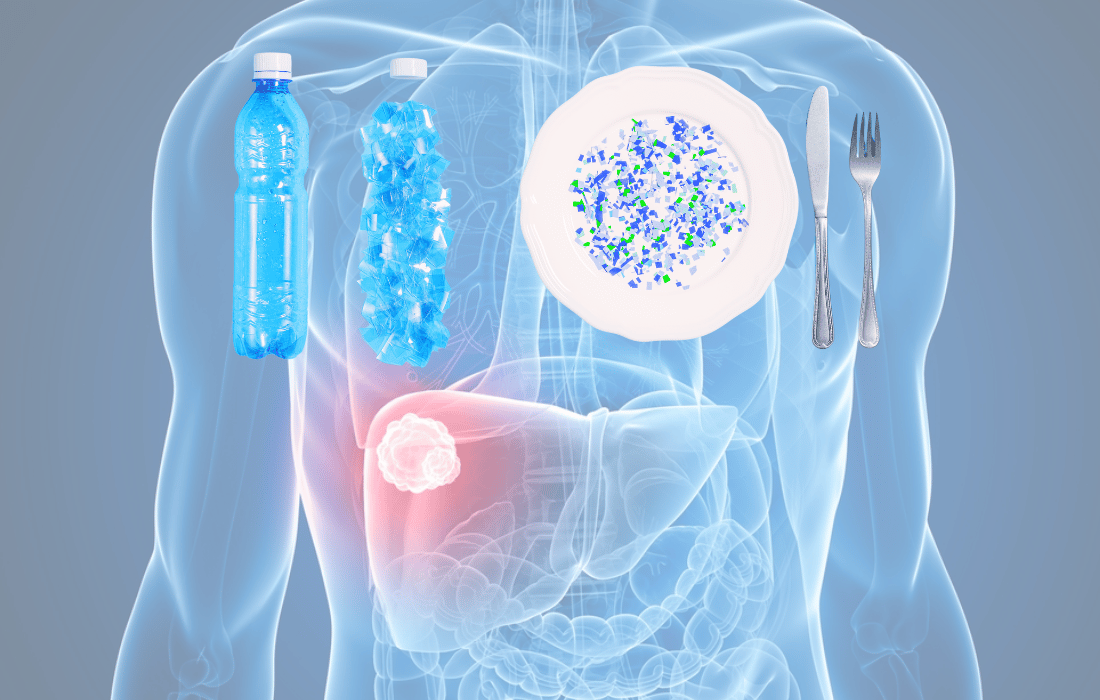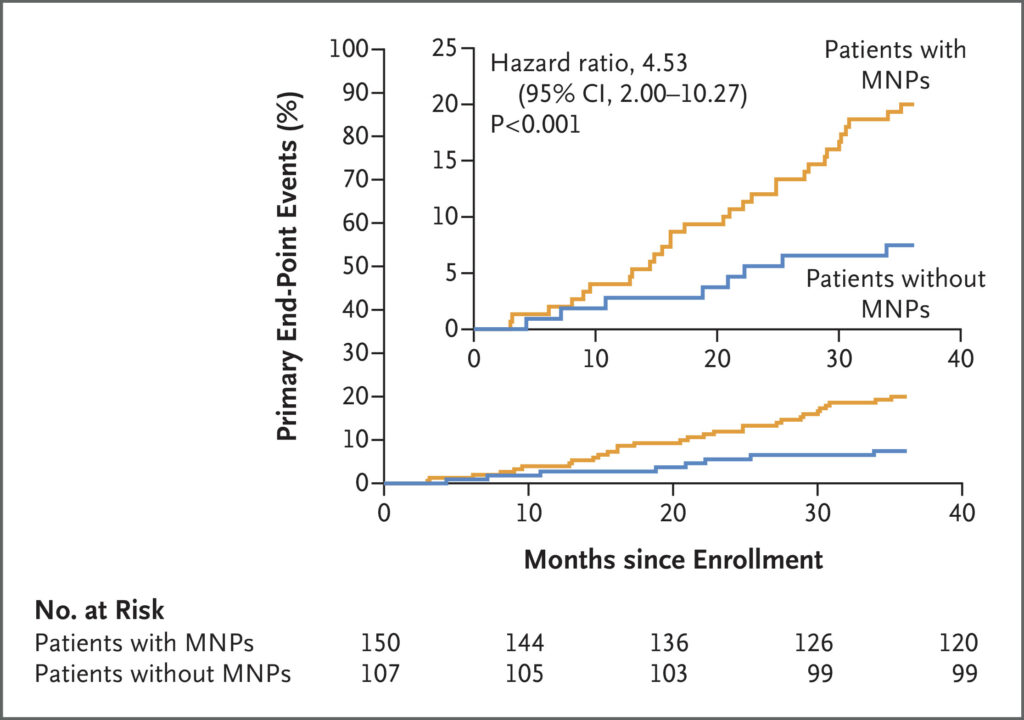Plastic—a marvel of modern engineering and convenience—has become an integral part of daily life. However, as we’ve mastered the art of production, the insidious consequences of plastic pollution have taken center stage in health and environmental discussions. Microplastics (MPs) and nanoplastics (NPs)—tiny fragments that result from the degradation of larger plastics—have permeated every corner of our planet, and now, disturbingly, our bodies.
Recent research highlights a troubling link between these micro(nano)plastics (MNPs) and lesions in organ tissues. In this expanded article, we’ll unpack the science, explore the health implications, summarize the myriad ways MNPs affect our bodies, and discuss why this invisible pollutant should concern everyone.
The Rise of Microplastics: A Modern Health Hazard
Global plastic production has skyrocketed from 1.5 million metric tons in the 1950s to nearly 391 million metric tons in 2021. This staggering increase has resulted in a parallel rise in plastic pollution, with MNPs infiltrating soil, waterways, food, and even the human body. It’s estimated that the average person consumes between 0.1 to 5 grams of MNPs per week through food, water, air, and even skin contact.
In an earlier post, we highlighted alarming findings of microplastics in 100% of tested human testicles. This discovery raised red flags about MNPs’ potential to disrupt reproductive health and systemic bodily functions. The latest findings, however, take this conversation even further—linking MNPs to organ tissue damage, oxidative stress, inflammation, and chronic diseases.
Microplastics Detected in Human Tissues
A groundbreaking study led by Zhejiang Agriculture and Forestry University examined data from 61 research articles on MNP detection and 840 articles on their toxicological mechanisms. Using advanced methods like spectroscopy and pyrolysis-gas chromatography/mass spectrometry, researchers identified MNPs in nearly every organ system studied:
- Respiratory System: Microplastics were found in lung tissues, bronchoalveolar lavage fluid, and sputum.
- Digestive System: MNPs were detected from saliva to feces, as well as in liver and gallstones.
- Circulatory System: Microplastics were observed in veins, arteries, and thrombi.
- Reproductive System: MNPs were found in testes, semen, uterus, and placenta.
- Skin and Bone Marrow: Evidence suggests that even external exposure results in accumulation.
These findings establish that no part of the human body is immune to microplastic contamination.
#Microplastics detected in #HumanTissues show a correlation with lesions and various health conditions. The findings highlight the need for further research on microplastic impact on human health. https://t.co/ewvxbwGJRD https://t.co/3WARJaQeMc
— Phys.org (@physorg_com) December 30, 2024
The Inescapable Reality of Microplastics in Everyday Life
Microplastics are everywhere—not just in the environment but also in the food and products we rely on daily. Drinking water, seafood, salt, fruits, vegetables, air, and even cosmetic products are sources of exposure. Research shows that people can inhale microplastics from the air, consume them through contaminated food, and absorb them through the skin when using personal care products.
A startling study revealed that microplastics were even found in placental tissues, raising significant concerns about prenatal exposure. Pregnant women and fetuses are especially vulnerable populations, as plastics containing endocrine-disrupting chemicals may interfere with hormonal signaling during critical stages of development.
How Microplastics Affect Human Health
To fully grasp the implications of MNP accumulation, let’s delve into the ways microplastics impact different systems of the human body:
Brain Health and Neurodegeneration
Microplastics have been found to cross the blood-brain barrier (BBB), a protective shield that separates the brain from circulating toxins and pathogens. This raises alarming concerns about their potential role in neurodegenerative diseases such as Alzheimer’s and Parkinson’s. Studies suggest that MNPs may induce oxidative stress, mitochondrial dysfunction, and inflammation in brain cells, leading to cognitive decline and neurological damage.
Gut Health and Digestive System Disorders
The digestive system is a major entry point for MNPs, which have been found in saliva, stomach contents, and feces. These plastics can disrupt gut microbiota, leading to imbalances that contribute to inflammatory bowel diseases (IBD), leaky gut syndrome, and other gastrointestinal conditions. By inducing oxidative stress and inflammation in the intestinal lining, MNPs may exacerbate conditions like Crohn’s disease and ulcerative colitis.
Endocrine Disruption
Many plastics contain endocrine-disrupting chemicals (EDCs) such as bisphenol A (BPA) and phthalates. These substances mimic or interfere with hormones, leading to reproductive issues, obesity, thyroid dysfunction, and even some cancers. Microplastics carrying these EDCs have been detected in reproductive organs, further amplifying concerns about fertility and hormonal balance.
Reproductive Health
Our previous article revealed the presence of MNPs in 100% of tested human testicles, highlighting their potential to disrupt male fertility. Additional studies have found MNPs in semen, uterine tissue, and the placenta. This contamination has been linked to reduced sperm quality, hormonal imbalances, and complications during pregnancy, including preterm births and developmental issues in offspring.
Cardiovascular Health
Microplastics (MPs) and nanoplastics (NPs) have been linked to increased cardiovascular risk through their presence in atherosclerotic plaques—a 2024 study in 58.4% of carotid artery plaques analyzed during surgeries for asymptomatic carotid artery disease. Patients with MNP-laden plaques were over four times more likely to experience major cardiovascular events, such as heart attacks or strokes, than those without detectable plastics. These particles contribute to oxidative stress, inflammation, and endothelial dysfunction, highlighting their role as an emerging risk factor for cardiovascular disease.
Placental and Fetal Health
The detection of microplastics in the placenta underscores the disturbing reality that MNPs can cross the maternal-fetal barrier. This contamination raises concerns about potential developmental issues in fetuses and long-term health implications for children exposed to plastics in utero.
Circulatory System and Thrombosis
Microplastics have been identified in veins, arteries, and thrombi, suggesting their role in cardiovascular diseases. Their accumulation in blood vessels may contribute to thrombosis, atherosclerosis, and other conditions by promoting oxidative stress and inflammation.
Skin and Bone Health
Although external exposure may seem less significant, microplastics can accumulate in the skin and bone marrow, potentially disrupting immune function and contributing to conditions like skin inflammation and poor bone health.
The Link Between Microplastics and Lesions
One of the study’s most alarming revelations is the positive correlation between microplastic concentration and tissue lesions. Researchers noted higher levels of MNPs in inflamed or diseased tissues compared to healthy ones. Examples include:
- Inflamed Intestines: Linked with inflammatory bowel disease.
- Fibrotic Lungs: Associated with chronic lung conditions.
- Cancerous Growths: Found in tissues affected by cervical cancer and uterine fibroids.
This raises a critical question: Do MNPs cause these lesions, or do pre-existing lesions attract and retain MNPs? While definitive answers remain elusive, the evidence points to a vicious cycle where MNPs contribute to oxidative stress, mitochondrial dysfunction, inflammation, and cell death, exacerbating or potentially initiating tissue damage.
Why This Matters: A Global Health Crisis
Plastic pollution isn’t just an environmental issue—it’s a public health emergency. The ubiquity of microplastics means that every person, regardless of lifestyle or location, is at risk of exposure. Vulnerable populations, such as pregnant women, infants, and individuals with pre-existing health conditions, face heightened risks.
Moreover, the accumulation of MNPs in tissues isn’t just a short-term concern. These plastics may remain in the body for years, contributing to cumulative damage and increasing the likelihood of chronic diseases.
Can We Eliminate Microplastics?
Efforts to mitigate MNP pollution in the environment are underway, but removing them from human tissues remains a monumental challenge. The diversity in particle size and chemical composition makes it nearly impossible to extract MNPs once they are embedded in living tissues. Prevention and reduction of plastic exposure are, therefore, the most viable strategies.
Taking Action: What You Can Do
While the long-term solutions to this crisis require systemic change, here are practical steps you can take to reduce your microplastic exposure:
- Filter Your Water: Invest in high-quality water purification systems to minimize plastic contamination.
- Use Air Purifiers: Invest in air purification systems to reduce airborne microplastics and improve indoor air quality.
- Incorporate Probiotics: Support gut health by including high-quality probiotics in your diet, which may help mitigate the impact of microplastics on intestinal flora.
- Opt for Glass or Stainless Steel: Whenever possible, avoid using plastic food and drink containers. Instead, choose glass for its safety and sustainability, or stainless steel as a durable alternative, especially for water bottles.
- JERF (Just Eat Real Food): Focus on consuming whole, minimally processed foods to limit exposure to plastics often found in packaging and processed products.
- Swap Plastic Cutting Boards: Replace plastic cutting boards with stainless steel or wooden alternatives to avoid microplastic shedding during food preparation.
- Educate Yourself: Stay informed about microplastics and their impact on health.
Conclusion: A Call for Awareness
The link between microplastics and organ tissue lesions is a wake-up call for society. As plastic production continues to rise, so do the risks associated with its microscopic byproducts. These findings demand urgent attention from researchers, policymakers, and individuals alike.
In our ongoing series on microplastics, we’ve explored their alarming presence in the body and the potential health crises they may cause. As the evidence mounts, one thing becomes clear: the era of “plastic convenience” comes at an unacceptable cost. It’s time to rethink our relationship with this pervasive material and prioritize health over habit.










